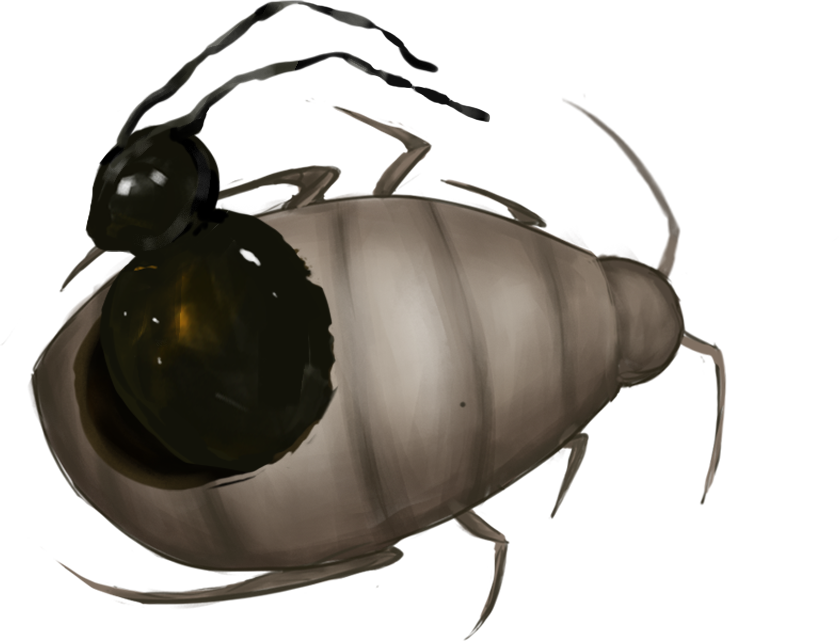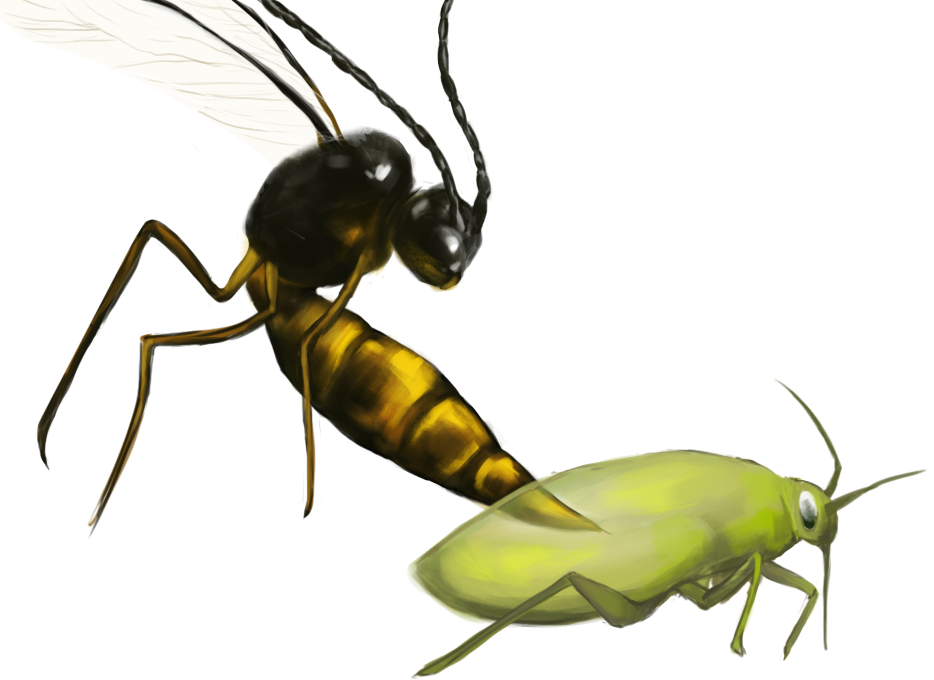
LIFE CYCLE
The time it takes to find a host varies depending on environmental factors of where it lives
Females wasps hunt by tracking the scent of infested plants and an aphid's secretions.
Once an aphid is found, the female wasp will touch them with its antennae to make sure they are the right species to deposit their eggs.
Each adult female lays 1 egg in about 100 aphids but may attack 200 to 300 in the process.
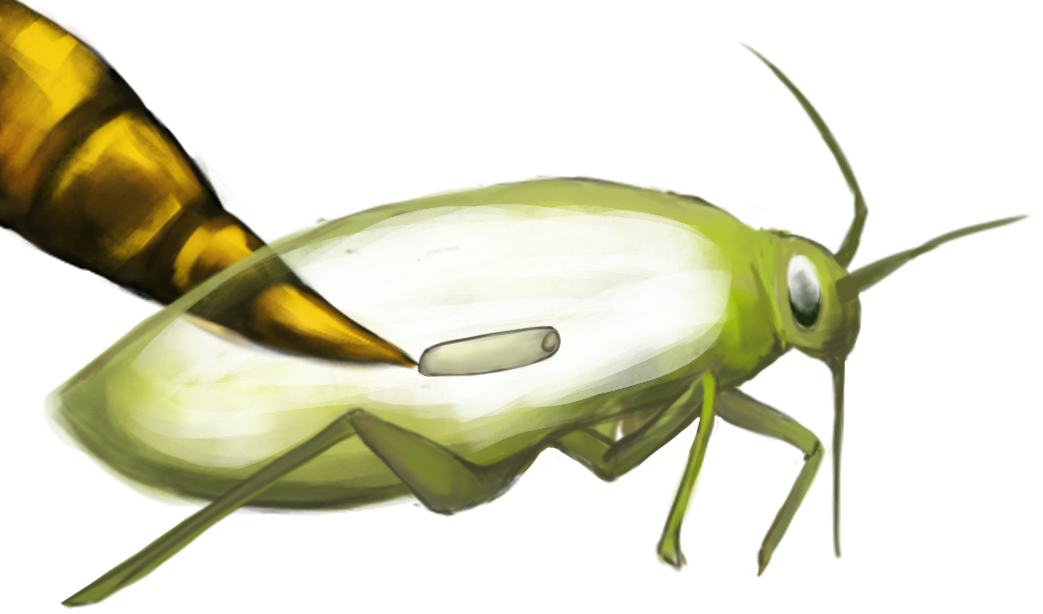
Once the female wasp verifies that its host is an aphid, it will inject and deposit an egg inside of it for incubation.
In this stage, the egg will incubate inside of the aphid for 3 to 5 days before it hatches into a larvae.
The number of eggs that a female can lay, as well as the size of the wasp itself, depends on the size of the aphid.
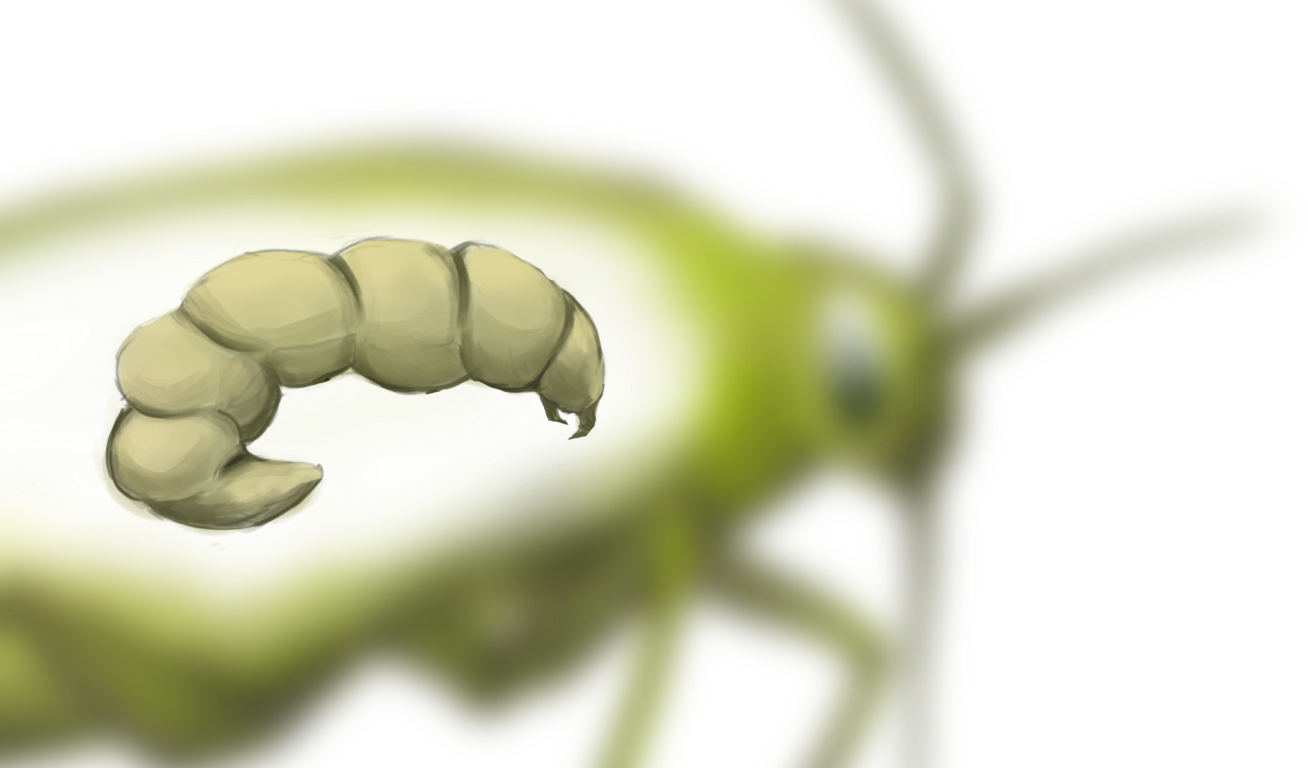
The larvae hatches from the egg and in order to pupate, it will slowly eat the aphid from within to survive.
Consuming the aphid from the inside will take 7 to 10 days
In its last few days of a larvae, it enters the prepupa stage and kills the aphid.
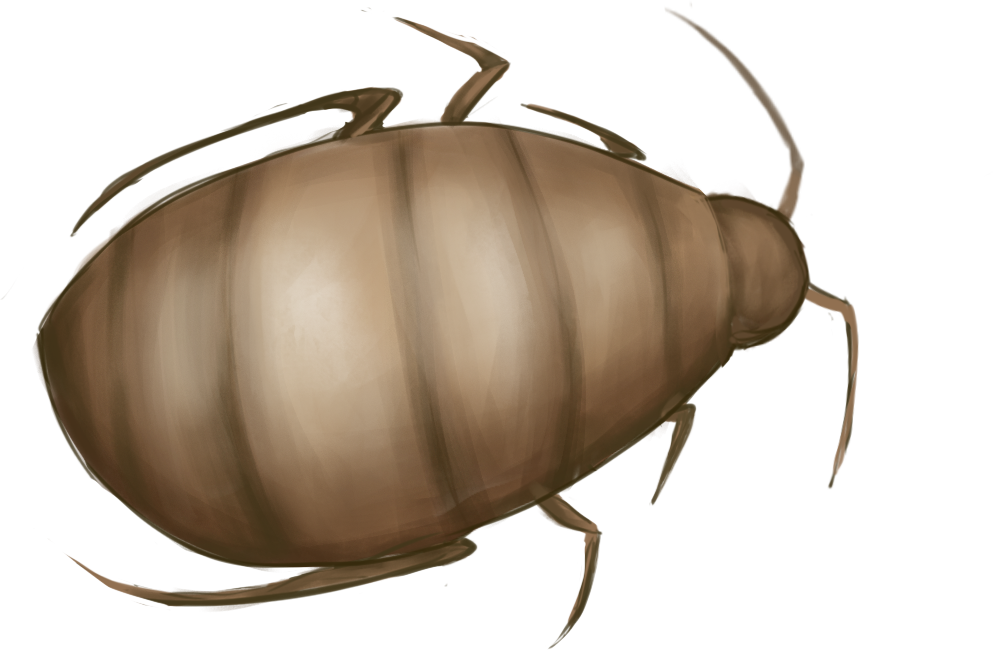
When the prepupa kills the aphid, it spins silk around the dead body and turns the aphid into a "mummy".
Once the aphid turns into a mummy and prepupa is secured inside the body, it will pupate for another 7 to 10 days
When the aphid is mummified, its skin darkens turning tan or golden, with a crusty and puffy texture.
